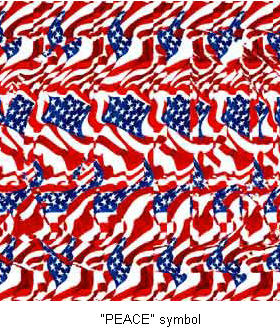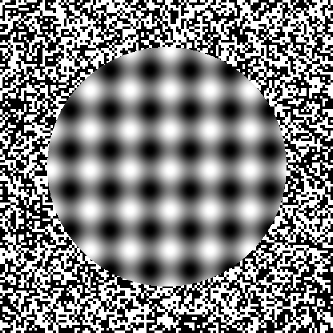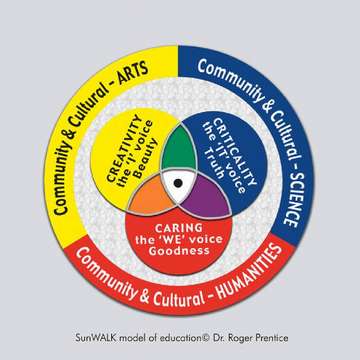The only form of dream analysis that seemed to me to offer the dreamer real insight – as opposed to hocus-pocus interpretation – is that found in Gestalt Therapy, as developed by Fritz and Laura Perls.
In this form the dreamer identifies all of the elements in the dream, one by one, and re-tells the story of the dream to her/his self, (and to the therapist if there’s one present). The point being that all of the elelments in the story are aspects of the self and/or concerns and conflicts within the individual and her/his life. – all meaning all, every thing that is re-called even such things as wall-paper, or carpets!
This multiple re-tellings of the story include every element identified – including inanimate objects and animals. The idea is that in these re-tellings, with the empathic entering into each of the elements, a breakthrough of insight will come to the dream-teller. Often it does.
I learned about this form of dream ‘analysis’ when doing a counseling course. For the person doing the analyzing it is to seek integration through insight – without interpretation, especially on the part of others. We used a little book The Red Book of Gestalt (1982) by Gaie Houston which I’m astonished to see is stilled stocked by Amazon. The relevant chapter is chapter 6.
Below is the beginning of an introductory article about the Perls and Gestalt;
Overview
Gestalt therapy is a phenomenological-existential therapy founded by Frederick (Fritz) and Laura Perls in the 1940s. It teaches therapists and patients the phenomenological method of awareness, in which perceiving, feeling, and acting are distinguished from interpreting and reshuffling preexisting attitudes. Explanations and interpretations are considered less reliable than what is directly perceived and felt. Patients and therapists in Gestalt therapy dialogue, that is, communicate their phenomenological perspectives. Differences in perspectives become the focus of experimentation and continued dialogue. The goal is for clients to become aware of what they are doing, how they are doing it, and how they can change themselves, and at the same time, to learn to accept and value themselves.
Gestalt therapy focuses more on process (what is happening) than content (what is being discussed). The emphasis is on what is being done, thought and felt at the moment rather than on what was, might be, could be, or should be.
Basic Concepts
The Phenomenological Perspective
Phenomenology is a discipline that helps people stand aside from their usual way of thinking so that they can tell the difference between what is actually being perceived and felt in the current situation and what is residue from the past (Idhe, 1977). A Gestalt exploration respects, uses and clarifies immediate, “naive” perception “undebauched by learning” (Wertheimer, 1945, p. 331). Gestalt therapy treats what is “subjectively” felt in the present, as well as what is “objectively” observed, as real and important data. This contrasts with approaches that treat what the patient experiences as “mere appearances” and uses interpretation to find “real meaning.”
The goal of Gestalt phenomenological exploration is awareness, or insight. “Insight is a patterning of the perceptual field in such a way that the significant realities are apparent; it is the formation of a gestalt in which the relevant factors fall into place with respect to the whole” (Heidbreder, 1933, p. 355). In Gestalt therapy insight is clear understanding of the structure of the situation being studied.
Awareness without systematic exploration is not ordinarily sufficient to develop insight. Therefore, Gestalt therapy uses focused awareness and experimentation to achieve insight. How one becomes aware is crucial to any phenomenological investigation. The phenomenologist studies not only personal awareness but also the awareness process itself. The patient is to learn how to become aware of awareness. How the therapist and the patient experience their relationship is of special concern in Gestalt therapy (Yontef, 1976, 1982, 1983).
The Field Theory Perspective
The scientific world view that underlies the Gestalt phenomenological perspective is field theory. Field theory is a method of exploring that describes the whole field of which the event is currently a part rather than analyzing the event in terms of a class to which it belongs by its “nature” (e.g., Aristotelian classification) or a unilinear, historical, cause-effect sequence (e.g., Newtonian mechanics).
The field is a whole in which the parts are in immediate relationship and responsive to each other and no part is uninfluenced by what goes on elsewhere in the field. The field replaces the notion of discrete, isolated particles. The person in his or her life space constitutes a field.
In field theory no action is at a distance; that is, what has effect must touch that which is affected in time and space. Gestalt therapists work in the here and now and are sensitive to how the here and now includes residues of the past, such as body posture, habits, and beliefs.
The phenomenological field is defined by the observer and is meaningful only when one knows the frame of reference of the observer. The observer is necessary because what one sees is somewhat a function of how and when one looks.
Field approaches are descriptive rather than speculative, interpretive, or classificatory. The emphasis is on observing, describing, and explicating the exact structure of whatever is being studied. In Gestalt therapy, data unavailable to direct observation by the therapist are studied by phenomenological focusing, experimenting, reporting of participants, and dialogue (Yontef, 1982, 1983).
The Existential Perspective
Existentialism is based on the phenomenological method. Existential phenomenologists focus on people’s existence, relations with each other, joys and suffering, etc., as directly experienced.
Most people operate in an unstated context of conventional thought that obscures or avoids acknowledging how the world is. This is especially true of one’s relations in the world and one’s choices. Self-deception is the basis of inauthenticity: living that is not based on the truth of oneself in the world leads to feelings of dread, guilt and anxiety. Gestalt therapy provides a way of being authentic and meaningfully responsible for oneself. By becoming aware, one becomes able to choose and/or organize one’s own existence in a meaningful manner (Jacobs, 1978; Yontef, 1982, 1983).
The existential view holds that people are endlessly remaking or discovering themselves. There is no essence of human nature to be discovered “once and for all.” There are always new horizons, new problems and new opportunities.
Dialogue
The relationship between the therapist and the client is the most important aspect of psychotherapy. Existential dialogue is an essential part of Gestalt therapy’s methodology and is a manifestation of the existential perspective on relationship.
Relationship grows out of contact. Through contact people grow and form identities. Contact is the experience of boundary between “me” and “not-me.” It is the experience of interacting with the not-me while maintaining a self-identity separate from the not-me. Martin Buber states that the person (“I”) has meaning only in relation to others, in the I-Thou dialogue or in I-It manipulative contact. Gestalt therapists prefer experiencing the patient in dialogue to using therapeutic manipulation (I-It).
Gestalt therapy helps clients develop their own support for desired contact or withdrawal (L. Perls, 1976, 1978). Support refers to anything that makes contact or withdrawal possible: energy, body support, breathing, information, concern for others, language, and so forth. Support mobilizes resources for contact or withdrawal. For example, to support the excitement accompanying contact, a person must take in enough oxygen.
The Gestalt therapist works by engaging in dialogue rather than by manipulating the patient toward some therapeutic goal. Such contact is marked by straightforward caring, warmth, acceptance and self-responsibility. When therapists move patients toward some goal, the patients cannot be in charge of their own growth and self-support. Dialogue is based on experiencing the other person as he or she really is and showing the true self, sharing phenomenological awareness. The Gestalt therapist says what he or she means and encourages the patient to do the same. Gestalt dialogue embodies authenticity and responsibility.
The therapeutic relationship in Gestalt therapy emphasizes four characteristics of dialogue:
1. Inclusion. This is putting oneself as fully as possible into the experience of the other without judging, analyzing or interpreting while simultaneously retaining a sense of one’s separate, autonomous presence. This is an existential and interpersonal application of the phenomenological trust in immediate experience. Inclusion provides an environment of safety for the patient’s phenomenological work and, by communicating an understanding of the patient’s experience, helps sharpen the patient’s self-awareness.
2. Presence. The Gestalt therapist expresses herself to the patient. Regularly, judiciously, and with discrimination she expresses observations, preferences, feelings, personal experience and thoughts. Thus, the therapist shares her perspective by modeling phenomenological reporting, which aids the patient’s learning about trust and use of immediate experience to raise awareness. If the therapist relies on theory-derived interpretation, rather than personal presence, she leads the patient into relying on phenomena not in his own immediate experience as the tool for raising awareness. In Gestalt therapy the therapist does not use presence to manipulate the patient to conform to pre-established goals, but rather encourages patients to regulate themselves autonomously.
3. Commitment to dialogue. Contact is more than something two people do to each other. Contact is something that happens between people, something that arises from the interaction between them. The Gestalt therapist surrenders herself to this interpersonal process. This is allowing contact to happen rather than manipulating, making contact, and controlling the outcome.
4. Dialogue is lived. Dialogue is something done rather than talked about. “Lived” emphasizes the excitement and immediacy of doing. The mode of dialogue can be dancing, song, words, or any modality that expresses and moves the energy between or among the participants. An important contribution of Gestalt therapy to phenomenological experimentation is enlarging the parameters to include explication of experience by nonverbal expressions. However, the interaction is limited by ethics, appropriateness, therapeutic task, and so on.
To read the full article, and a whole bunch of other articles go HERE
—–0—–
All postings to this site relate to the central model in the
PhD. Summaries are HERE
SEE also Learning Motivation for Success




 (source
(source

